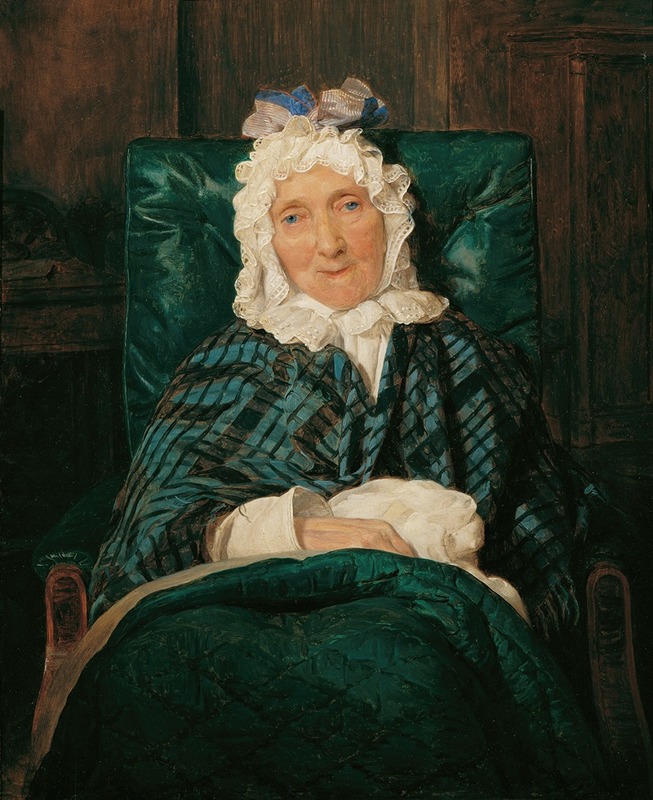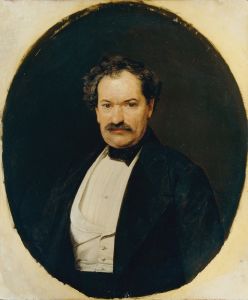
Aloisia Eltz im Lehnstuhl
A hand-painted replica of Ferdinand Georg Waldmüller’s masterpiece Aloisia Eltz im Lehnstuhl, meticulously crafted by professional artists to capture the true essence of the original. Each piece is created with museum-quality canvas and rare mineral pigments, carefully painted by experienced artists with delicate brushstrokes and rich, layered colors to perfectly recreate the texture of the original artwork. Unlike machine-printed reproductions, this hand-painted version brings the painting to life, infused with the artist’s emotions and skill in every stroke. Whether for personal collection or home decoration, it instantly elevates the artistic atmosphere of any space.
Ferdinand Georg Waldmüller was a prominent Austrian painter of the 19th century, known for his detailed and realistic portrayals of everyday life and landscapes. One of his notable works is "Aloisia Eltz im Lehnstuhl," which translates to "Aloisia Eltz in the Armchair." This painting exemplifies Waldmüller's skill in capturing the essence of his subjects with meticulous attention to detail and a keen sense of realism.
"Aloisia Eltz im Lehnstuhl" is a portrait that showcases Waldmüller's ability to render textures and fabrics with precision, a hallmark of his style. The painting depicts Aloisia Eltz, a woman seated comfortably in an armchair, exuding a sense of calm and introspection. The composition is intimate, drawing the viewer's attention to the subject's serene expression and the intricate details of her attire and surroundings.
Waldmüller was part of the Biedermeier period, a time in Austrian art characterized by a focus on the domestic and the everyday. This period followed the tumultuous Napoleonic Wars and was marked by a return to order and stability, which was reflected in the art of the time. Artists like Waldmüller sought to capture the beauty and tranquility of ordinary life, often portraying subjects in their homes or natural settings.
In "Aloisia Eltz im Lehnstuhl," Waldmüller employs a soft color palette and natural lighting to enhance the peaceful atmosphere of the scene. The use of light and shadow is particularly effective in creating a sense of depth and realism, highlighting the textures of the fabrics and the subtle expressions on the subject's face. This attention to detail is a testament to Waldmüller's dedication to his craft and his ability to convey emotion through his art.
Waldmüller's work is often celebrated for its technical excellence and its ability to capture the spirit of the Biedermeier era. His portraits, in particular, are noted for their psychological depth and the way they convey the personality and mood of the sitter. "Aloisia Eltz im Lehnstuhl" is no exception, offering a glimpse into the life and character of its subject through the artist's skilled brushwork and keen observational skills.
Throughout his career, Waldmüller was a prolific artist, producing a wide range of works that included portraits, landscapes, and genre scenes. His contributions to Austrian art were significant, and he is often regarded as one of the leading figures of the Biedermeier period. His paintings continue to be studied and admired for their beauty, technical mastery, and insight into 19th-century Austrian society.
In summary, "Aloisia Eltz im Lehnstuhl" is a fine example of Ferdinand Georg Waldmüller's portraiture, reflecting the artist's commitment to realism and his ability to capture the essence of his subjects. The painting remains an important piece within Waldmüller's oeuvre and serves as a testament to the enduring appeal of the Biedermeier style in art history.


















